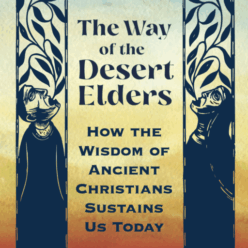
Today, I’m sharing with you my thoughts and draft notes as I prepare a talk.
If you’re getting stuck and feeling like you can’t find your purpose, or if you thought you knew your purpose and now you don’t really–don’t worry.
Although your basic human purpose changes very little, the details can change at different stages in life or in different circumstances. You are normal.
If you don’t know this bit about the shifts of purpose, you can go through dark periods needlessly and have longer slumps. Well, enough of that!
The WISP technique is something I came up with to keep me on track.
Not that there could be a “technique” per se.
Think of it as a rule of thumb or guide, if that helps.
Do you have a notebook?
Grab one.
Purpose – the finding and keeping of it – can be slippery. So, field notes help.
Keep track of your progress. It gives you a structure and a history to check on.
STEP 1
W
Worship
Does this sound a bit odd? Worship.
The more odd it sounds to you as a starting point, the more you need to do it to get properly orientated straight-away.
Worship is other focused, by nature. Yes?
That new perspective alone can help you make a break-through. But, really it’s much more than that at work.
“As we worship a fundamental shift happens because we remember who we really are.” -LD
At first blush it seems like worship is for God, because he is owed our worship. True?
That’s really only part of it. Let’s dig deeper:
1. God doesn’t need ANYTHING from us. He’s not insecure.
2. This means that Worship is to him (or toward him), but for OUR benefit.
To put it simply, God commands us to worship him because he wants it to be well with us.
[He knows we need it. Sure it’s his due, but he’s not an egomaniac. He’s always been taking care of us, even through the vehicle of worshipping him.]
When we fail to worship God, we start to worship lesser gods, like…ourselves, other mortals, our ambitions, the gods of the secular, dying world, and countless vanities.
Astray is where we go without properly directed worship.
Few things can create more clarity than a rightly worshipful heart.
• Clarity is a byproduct of worship and so are many other positive things I won’t get into this time.
Remember what Worshiping God helps us remember:
- Who we are
- Who we love (and who loves us)
- And to whom we belong
Don’t feel like worshiping?…well you have to start somewhere.
Loosen your grip on your desires and expectations until you finish this stage. Shift your posture and you will find a new take on your life and on your purpose.
Back to that Handy-dandy Notebook!
(Shout out to Dora the Explorer)
Note feelings, changes, attitudes in your field notes now and during worship.
So where or how should you start in worship?
You can start with something that tends to speak to you and get through to you. What worked before? Start there and keep pushing through. Maybe you’ll find something new or maybe something familiar will help.
OPTIONS:
For some this may mean getting a true break from others and a return and appreciation of the created world. (A walk, a camping trip, a hike, a solo picnic.)
For some it’s music and song. (Just listen, create some, or sing along.)
For some it’s just praying for a while. (It’s talking to God, so it’s a great place to start, if possible.)
For some it’s a with the help of a spiritual exercise like… “Praying the Names of God”
Here’s a quick “course” on how it works:
“Praying the names of God” is to first, come up with 10, 20, or 100 names of God. There are plenty: Savior, Redeemer, Creator, Father, Shepherd, Mother Hen, Majestic…you get the idea. As you say, write, and pray the names, roll them over in your mind. What do they mean? Let them affect you, be thankful and rejoice, and (of course) express your thanks and gratitude to God in prayer…which would be the actual worshiping part.
Example: “God you are my Provider. You have taken care of me and continue to. I thank you for providing for me, even in ways I don’t now about. God you are my Rock…”
Reading the Bible might help trigger true worship. Reading the psalms or the great Bible stories like the one of Joseph can inspire a true attitude of worship. You can read using the practice of Lectio Divina for some extra punch too. As you read thorough a portion, note the works or wonders of God, and pray about them, giving glory to God. Worship.
Maybe you have other ways to get the worship started. So, just get started!
HOMEWORK!
You thought this was just some quick reading or some mental exercise, huh?
Nope. I’m asking more of you.
Assignment:
Use a notebook to record your mode of worship and your attitude at the start, during the time of worship, and afterwards. Then, continue to enter into times of short (5-15 minutes) and uninterrupted worship experience for a few days, or until the next post (which ever is longer).
Next post we will continue and with I in WISP
Click Here



